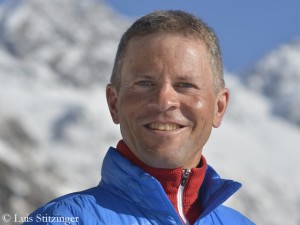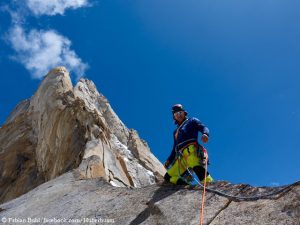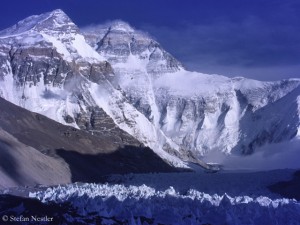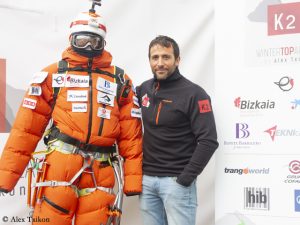Eight-thousander No. 8 for Luis Stitzinger
According to his own words, Luis Stitzinger has reached the 8,080-meter-high summit of Gasherbrum I in the Karakoram yesterday (Wednesday). He was on his descent, the 49-year-old German climber informed via Facebook today. For Luis, it is his eighth eight-thousander success after Cho Oyu (in 2000), Gasherbrum II (in 2006), Nanga Parbat (in 2008), Dhaulagiri (in 2009), Broad Peak (in 2011), Shisha Pangma (in 2013) and Manaslu (in 2017). He climbed all of them without bottled oxygen, six of them together with his wife Alix von Melle.
Success after all
As reported, Stitzinger had previously abandoned the planned first ascent of the 7,082-meter-high Urdok Kangri II because of the masses of fresh snow on the mountain. Luis had led the expedition of the German operator “Amical alpin”, in which Alix had also participated. While Alix turned back home along with the other members, Luis decided to tackle Gasherbrum I.
I am particularly pleased about his success, as we have a common past: In July 2014, Luis led the Amical expedition to Kokodak Dome, which ended with the first ascent of the 7,129-meter-high mountain in western China. Since then I can also call myself a first ascender. I never would have made it without Luis.
Death on 7000er in India
Sad news is reported from the 7,416-meter-high Saser Kangri IV in the Indian part of the Karakoram: The search for Pemba Sherpa was called off after five days. The 45-year-old Nepalese had fallen into a crevasse when a snow bridge had collapsed. It is believed that he fell into the icy meltwater at the bottom of the crevasse. Pemba had scaled Everest eight times and another five eight-thousanders.
Update July 24: Luis has published some details of his successful ascent of Gasherbrum I. According to his own words, he ascended together with 52-year-old Italian Gianpaolo Corona in Alpine style. On the summit day they had to break the trailthrough calf-deep fresh snow. After more than 13 hours they reached the highest point. Luis tried a ski descent from the summit, but had to interrupt it in the so-called “Japanese Couloir” due to too great avalanche danger. “A decision I found very difficult. After all, you don’t like to leave the fillet. But in this case there was no discussion,” reports Stitzinger and concludes: “A happy ending to an extremely difficult season in the Karakoram: After several weeks of almost uninterrupted snowfall at the beginning of the season in June, many expeditions had to leave empty-handed. Even after the weather had calmed down again, the snow masses and the bad conditions allowed only a few summit successes on the Pakistani eight-thousanders as it has rarely been. So we are all the happier that we made it despite all this, just the two of us!”











